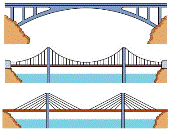Civil and Environmental Engineering, Department of

Department of Civil and Environmental Engineering: Faculty Publications
Document Type
Article
Date of this Version
10-5-2023
Citation
J. Wang, R. DeVine, N. Huynh et al., Comparison of models with and without roadway features to estimate annual average daily traffic at non-coverage locations, International Journal of Transportation Science and Technology, https://doi.org/10.1016/j. ijtst.2023.10.001
Abstract
This study develops and evaluates models to estimate Annual Average Daily Traffic (AADT) at non-coverage or out-of-network locations. The non-coverage locations are those where counts are performed very infrequently, but an up-to-date and accurate estimate is needed by state departments of transportation. Two types of models are developed, one that simply uses the nearby known AADTs to provide an estimate and one that requires roadway features (e.g., type of median, presence of left-turn lane). The advantage of the former type is that no additional data collection is needed, thereby saving time and money for state highway agencies. A natural question and one that this study seeks to answer is: can this type of model provide equally as good or better estimates than the latter type? The models developed belonging to the first type include hybrid-kriging and Gaussian process regression model (GPR-no-feature), and the models developed belonging to the second type include point-based model, ordinary regression model, quantile regression model, and Gaussian process regression model (GPR-with-features). The performance of these models is compared against one another using South Carolina data from 2019 to 2021. The results indicate that the GPR-with-features model yields the lowest Root Mean Squared Error (RMSE) and lowest Mean Absolute Percentage Error (MAPE). It outperforms the hybrid kriging model by 6.45% in RMSE, GPR without features model by 4.25%, point-based model by 4.69%, regular regression model by 11.35%, and quantile regression model by 4.25%. Similarly, the GPR-with-features model outperforms the hybrid kriging model by 25.21% in MAPE, GPR without features model by 17.81%, point-based model by 22.26%, regular regression model by 26.36%, and quantile regression model by 21.07%.


Comments
Open access.